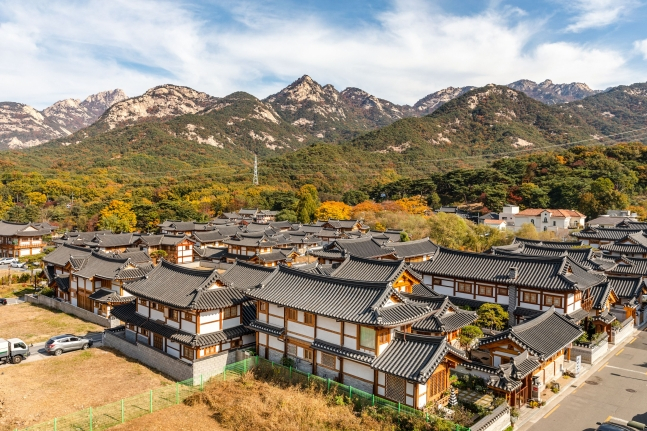Construction & Planning
10 villages featuring traditional Korean architecture to be built in Seoul
The city government's 'fusion Hanok' project will also subsidize construction costs and resolve structural defects
By Feb 15, 2023 (Gmt+09:00)
1
Min read
Most Read
LG Chem to sell water filter business to Glenwood PE for $692 million


Kyobo Life poised to buy Japan’s SBI Group-owned savings bank


KT&G eyes overseas M&A after rejecting activist fund's offer


StockX in merger talks with Naver’s online reseller Kream


Mirae Asset to be named Korea Post’s core real estate fund operator



The Seoul Metropolitan Government is pursuing a "fusion Hanok" project of building 10 Hanok (traditional Korean architecture) villages in the capital using concrete and steel frames through subsidized construction costs under a plan to ease access to Hanok for tourists and the public.
The city government on Tuesday released its plan dubbed "Seoul Hanok 4.0 Reinvention," which seeks to revive the nation's traditional architecture by reinterpreting and developing Hanok in more modern way.
Of 73 criteria for architectural review of Hanok, 44 will be eased or abolished. Improvement of the system could allow the expanded use of glass windows and installation of an atrium covering the front yard with a glass roof. And the project will tackle Hanok's traditional weaknesses of being "cold and uncomfortable."
The expanded scope of what constitutes Hanok will mean more subsidies for new construction of such buildings like a direct grant of up to 120 million won ($94,100) and loan of 30 million won. Even if a Hanok requires a complete overhaul, combined support of 180 million won is possible including a grant of a maximum 90 million won and a loan for the same amount.
Even commercial buildings in downtown Seoul that use Hanok architectural styles or designs are eligible for construction subsidies. Hanok can combine modern structures and materials such as reinforced concrete, so building projects that meet minimum Hanok requirements like Korean-style wooden structures, roof frames and shapes, and tiles and elevation ratio can get subsidies covering half of construction and repair costs.
Write to Hyun-Il Lee at hiuneal@hankyung.com
More to Read
-
 Travel & LeisureSeoul reclaims spot as Japanese tourists' top destination after 11 yrs: HIS
Travel & LeisureSeoul reclaims spot as Japanese tourists' top destination after 11 yrs: HISNov 28, 2022 (Gmt+09:00)
1 Min read -
 Travel & LeisureNumber of tourists to S.Korea, Japan surge on eased visa restrictions
Travel & LeisureNumber of tourists to S.Korea, Japan surge on eased visa restrictionsNov 18, 2022 (Gmt+09:00)
1 Min read -
 Korean 100-year-old traditional house becomes trendy destination for cafe-goers
Korean 100-year-old traditional house becomes trendy destination for cafe-goersSep 27, 2020 (Gmt+09:00)
5 Min read
Comment 0
LOG IN


